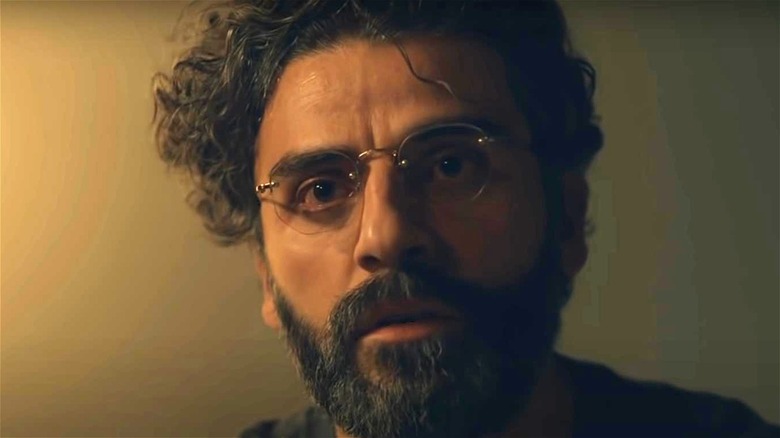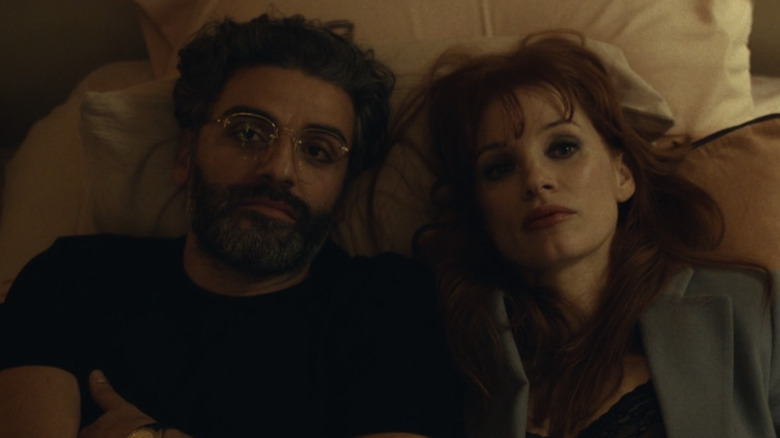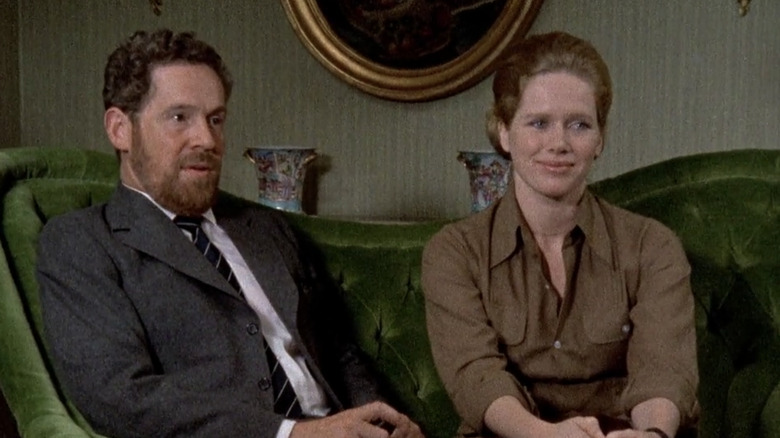The Ending Of Scenes From A Marriage Season 1 Explained
When Ingmar Bergman's "Scenes from a Marriage" premiered in 1973, it marked a new way of framing the modern relationship, doing so in a series of vignettes over time. Since its debut, many other projects have used it as inspiration to tell similarly raw stories about marriages and their evolution, from "Before Midnight" to "Marriage Story."
The recent HBO adaptation of "Scenes from a Marriage" is proving to be just as tempestuous as the original. Starring Oscar Isaac and Jessica Chastain, "Scenes from a Marriage" tells the story of Jonathan and Mira as they break up, make up, and do everything in between. The official description for the miniseries on HBO notes that it explores "love, hatred, desire, monogamy, marriage, and divorce," and it's earning high praise from critics and reviewers so far.
Let's take a look at the ending of "Scenes from a Marriage," and what it aims to tell us about modern love.
Distance makes the heart grow fonder
By the last episode of "Scenes from a Marriage," the couple is divorced: Jonathan is at his dad's funeral at the episode's start, and Mira tells her new beau Poli (Michael Aloni) that she can't go out because she has to watch her daughter. We soon learn this is a lie. As it turns out, Jonathan and Mira are having an ongoing affair, and have chosen this time to pay a visit to their old house, which is being rented out by its new owners as an Airbnb.
It seems that the physical act of signing divorce papers — paired with some much-needed distance — has helped to bring the couple back together, though only in some ways. They each have other relationships to varying degrees of importance, but both admit they'll probably never feel the same way about anyone else as they once did for each other. While some films or shows might offer a hint at hope for reconciliation, "Scenes of a Marriage" suggests that this may be as far as the divorced couple's love will go; There's no suggestion of getting back together.
The melancholy tone we saw throughout the series lasts until the very end, and although the couple falls asleep in each other's arms in the new strangeness of their old home, it's not necessarily what one would call a happy ending. This just goes to show that love, like many things in life, is complicated, and can change so much throughout the years that it becomes almost unrecognizable.
An update of the original
Rather than try to exactly re-create Bergman's version of "Scenes from a Marriage," the updated take features several changes. For instance, Jonathan takes on most of the childcare responsibilities, Mira is the one who has an affair, and Mira also makes more money than Jonathan — all of which are examples of gender-swapping when compared to the original series.
When Vanity Fair asked the limited series' creator, director, and writer Hagai Levi if he'd always known he wanted to make Mira the character who has the affair, he admitted considering it for a good seven years. "I didn't know what to do with it, or even if I should do it," he continued. "Why remake it? It's there already; you can go watch it. ... I needed an angle. When I had [the reversal] idea, that's when I started writing. It fell into place. Another obstacle for me at first: these characters are a**holes. Bergman didn't care. [Erland Josephson] is a cold, chauvinistic cheater, and [Liv Ullman] is a dependent, 'old school' family woman tied up with bourgeois conventions. ... Swapping it, I realized, okay, maybe I am a little like him, and the woman is someone I know and like."
Aside from the dynamic coupling of Isaac and Chastain, Levi's decision to swap a majority of the couple's key personality traits and motivating factors makes for an interesting take on the source material.


